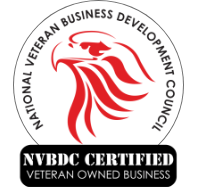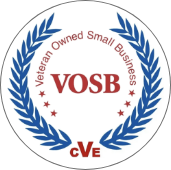Linemen who work on powerlines and utility poles have a hazardous job. They are often working high above the ground and providing maintenance for circuits and powerlines with dangerous electrical currents. It is important for linemen to keep themselves protected on the job by using the right equipment, as well as personal protective grounds.
What is Protective Grounding?
Protective grounding is what linemen and other utility workers use to protect themselves against the possibility of an electric shock while working on powerlines and circuits. Linemen build protective grounds using cables and clamps that effectively ground any electrical current that may pass through the powerlines and circuit being worked on. This is done to protect linemen in case the powerlines are not de-energized or become re-energized due to one of several possible factors.
How Utility Grounding Protects Linemen
When linemen work on utility equipment, there is always an electrical current running through the equipment. The protective grounding does not kill the current, but instead provides a path to ground the current.
The protective grounding equipment is not installed until the circuit has been tested to ensure that the voltage is absent. If the powerlines or circuit become re-energized, the protective grounding will allow the maximum short-circuit current through the system.
Choosing the Right Personal Protective Grounding Equipment
The personal protective grounding equipment must be installed correctly, and it is important to use the right equipment for the situation. A bad connection can make the protective grounding faulty which puts linemen in danger.
When choosing the high voltage grounding cables to use for your protective grounds, you must consider the withstand rating of the cable and the length. The withstand rating tells you how much current the cables can handle and for how long.
Protective Grounding Inspection and Cleaning
Before installing the protective grounding equipment, you need to make sure it is in perfect working order to effectively protect the linemen. This equipment must be thoroughly inspected prior to installation and cleaned so it will function properly.
Protective Grounds Inspection
Make sure you check the cables and clamps for the following issues. If you find that the equipment is damaged in any of the following ways, you should stop using that equipment immediately.
- Check for sections of cable that are flat, cut, or kinked.
- Look for broken cable strands at connection points.
- Look for swollen cable jackets or soft spots which can indicate corrosion.
- Look for splits, cracks, and other damage to the clamps.
- Check the clamp jaws for wear.
- Check for wear on the tightening bolt threads of the clamp.
- Look for loose connections between the clamps and the cables and ferrules.
- Make sure the threaded clamping mechanism works smoothly.
Protective Grounds Cleaning
The phase conductors and electrodes must be free of oxidation before they are attached to the grounding cables. Make sure you clean these parts using a stiff wire brush to remove any oxidation.
Protective Ground Testing
The final thing you need to do before you begin work is have the grounding tested. The testing is important to ensure the personal protective grounds will protect linemen. Once you have set up the protective grounding, it may be best to hire a professional that can test the protective grounding for you.
Divergent Alliance provides complete personal protective ground testing services. We will inspect the cables, ferrules, and clamps to ensure that they are connected properly. We will also look for signs of damage in the equipment and we can clean the connecting parts if needed.
Once we have ensured that the protective grounding is set up correctly and that the equipment is in good repair, we will test the equipment to ensure it is working effectively. Our testing is done according to standard specifications of ASTM F2249 and ASTM F855 for accurate results.
Contact Divergent Alliance to learn more about our protective grounding testing and repair services as well as the grounding equipment that we provide.




